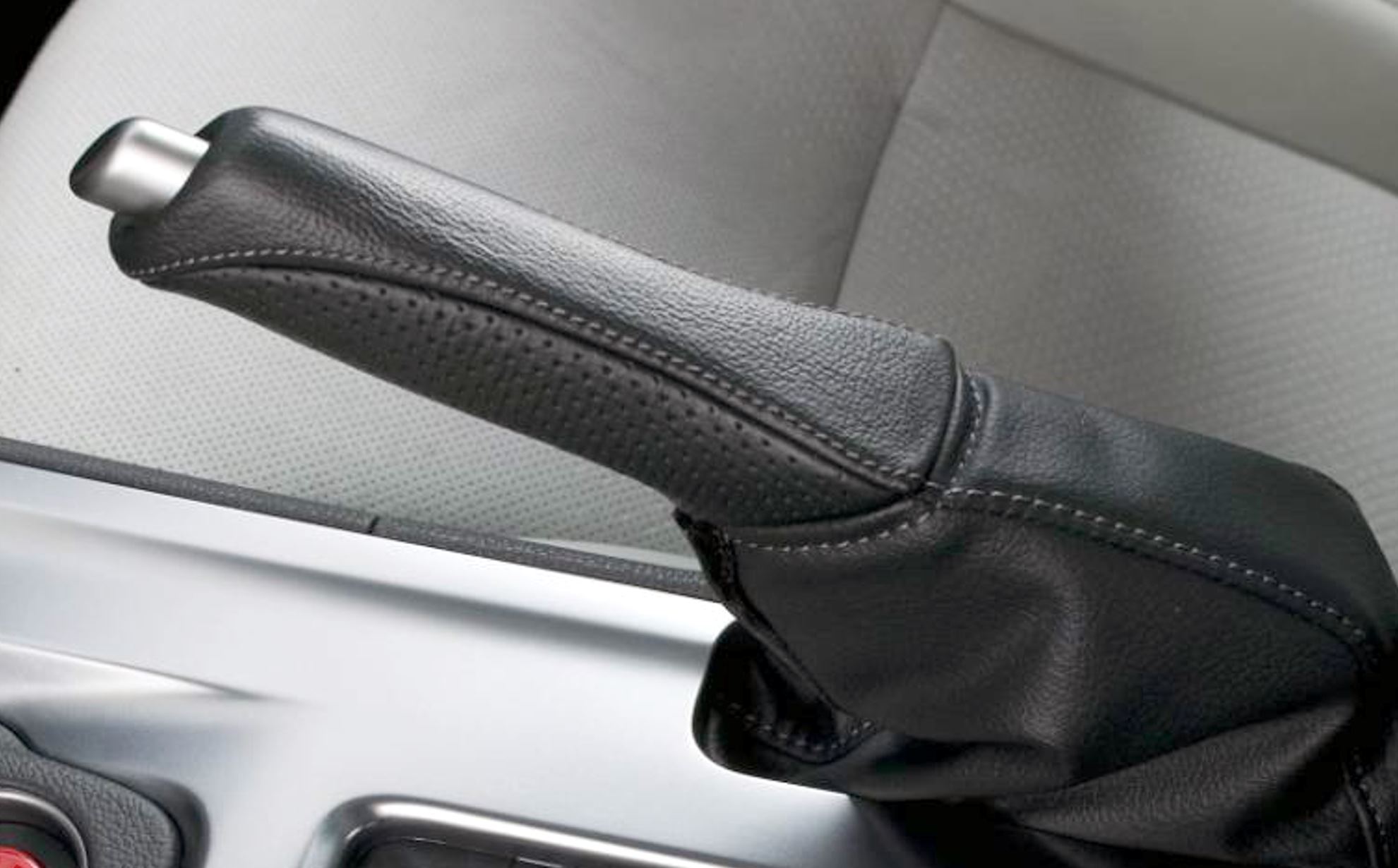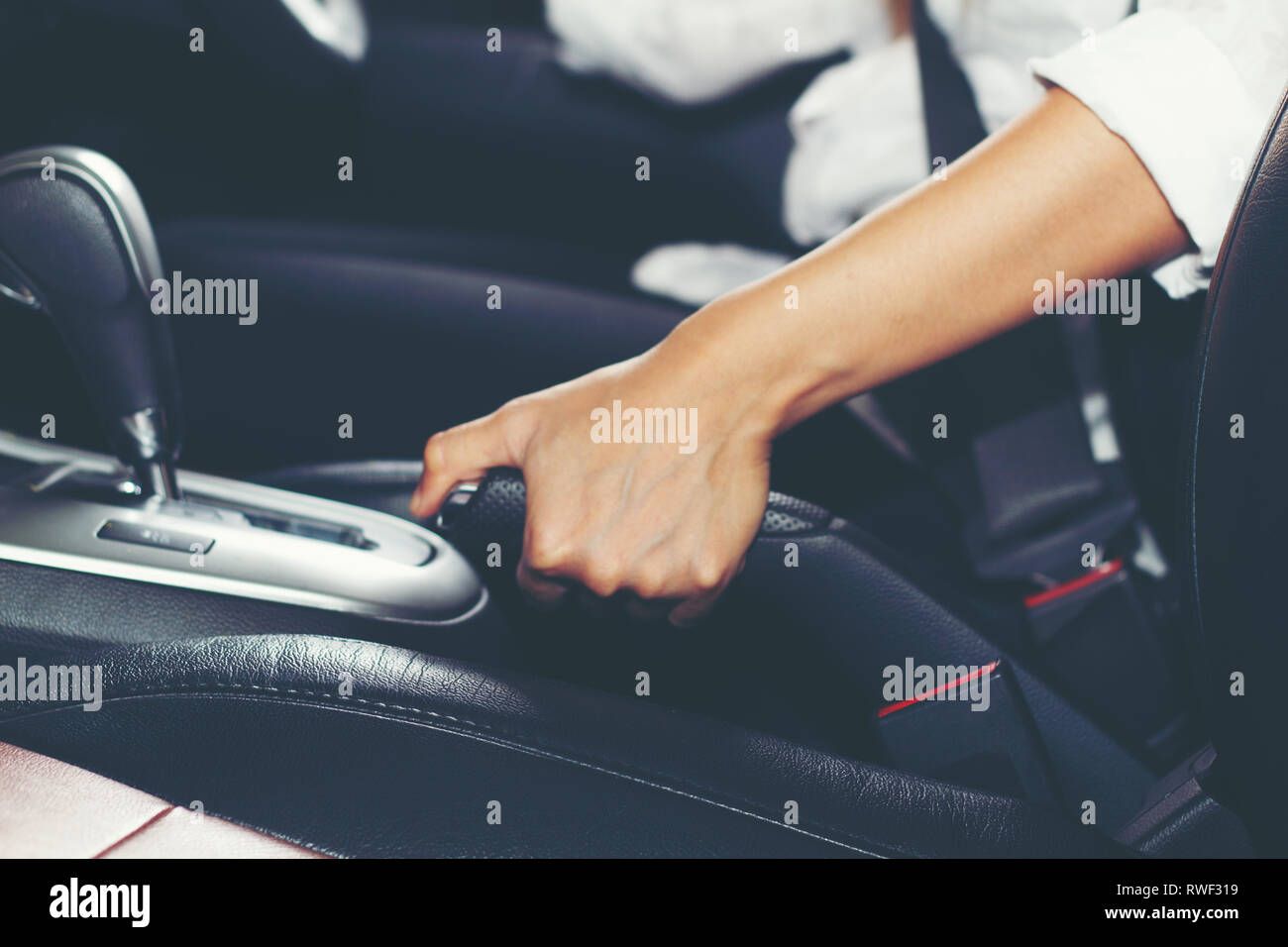

Swing-link-compensator Hand-brake Cable Layout.Ī pull-twist handgrip (Fig. Sliding-equalizer hand-brake cable linkage layout. Consequently this action provides an equal tension to each rear brake lever though both halves of the secondary cable.įig. The secondary cable slides relative to the equalizer around a specially formed semicircular groove, so that any difference in length or slackness between the two halves is equalized. During the application of the hand brake lever, the primary cable pulls the middle of the secondary cable. The cover is usually fixed to the car’s underbody structure at one end. The hand brake lever can be adjusted by a nut screwed on the threaded end of the primary cable.Īn outer cable cover supports and guides the secondary cable. The middle of the secondary cable is looped around the curved equalizer, and each end of this cable is connected to the brake lever of one side wheel (Fig.

This arrangement transfers the hand lever movement to a sliding equalizer through a single primary cable. Sliding-equalizer Hand-brake Cable Layout. Various hand levers are interchangeable to suit the car’s configuration. The braking effort in both cases is transmitted from the hand brake lever to the rear wheels by tension, in contrast to a hydraulic foot brake circuit, that works in compression. The general trend is to use a cable for cars and vans, and rods only for heavy duty commercial vehicles. Parking brakes are generally provided only on the rear road wheels.Įither cable or rod linkage is used in a hand brake system to link the various components together. Since the hand-brake system may be in operation for very long time period, a linkage mechanism separate from that of the hydraulic foot-brake circuit is installed. This makes the handbrake safer to use because if too much braking power is applied to the rear wheels, they will lock and this can cause the car to spin if it’s in a turn.Ĭars with handbrakes which are operated using a switch often have an emergency mode where you hold the switch for a couple of seconds and it will assume you need to do an emergency stop.While the foot-brake system retards or stops a moving vehicle, the hand brake system prevents the vehicle moving once it is parked.
#HANDBRAKE CAR PLUS#
The handbrake provides less than half the power of a foot brake, plus it’s only operating on the rear wheels which typically can apply only 25% of the braking force due to weight transfer to the front of the car. The handbrake is quite a weak brake but it can be used to slow you down if your foot brakes do fail. It was originally called the emergency brake because it was designed to be operated in the case that the main brakes failed, something that’s not common now.

#HANDBRAKE CAR DRIVERS#
Many drivers think that if they have their foot on the brake, this will work, but as a vehicle hits you from behind, it will lift your foot off the foot brake. Using your handbrake when you are waiting at traffic lights or a junction means that anyone hitting you from behind won’t shunt you into the car in front. Red handbrake lever doesn’t make you go faster This can be as simple as putting a piece of wood in front of the tyre, although the height of the chock should be increased if the slope is steep. If you’re towing a trailer or carrying a heavy load, it’s strongly advised to chock the wheels. However, this should be used in conjunction with the handbrake. This is because it takes a certain amount of energy to turn over the engine – the engine resists this, preventing the car from moving forwards or backwards. You can use first or reverse gear to prevent a car moving on a slope (up to a point).
#HANDBRAKE CAR MANUAL#
Electronic hand brakes are activated using a switch Manual transmission In this case, follow the advice below regarding trailers. You might have an automatic handbrake which releases as soon as you engage a gear and engages if you are in neutral and turn off the engine. If you don’t use the handbrake regularly it can seize up. The handbrake usually only operates the rear wheels, but there are some exceptions. It can be a lever between the seats, a foot-operated brake to the left of the clutch, a switch, or a pull handle below the steering column. Different cars have different procedures and different ways of applying this brake.

Whenever you are parked, you should use your handbrake (also called parking brake, emergency brake or e-brake).


 0 kommentar(er)
0 kommentar(er)
